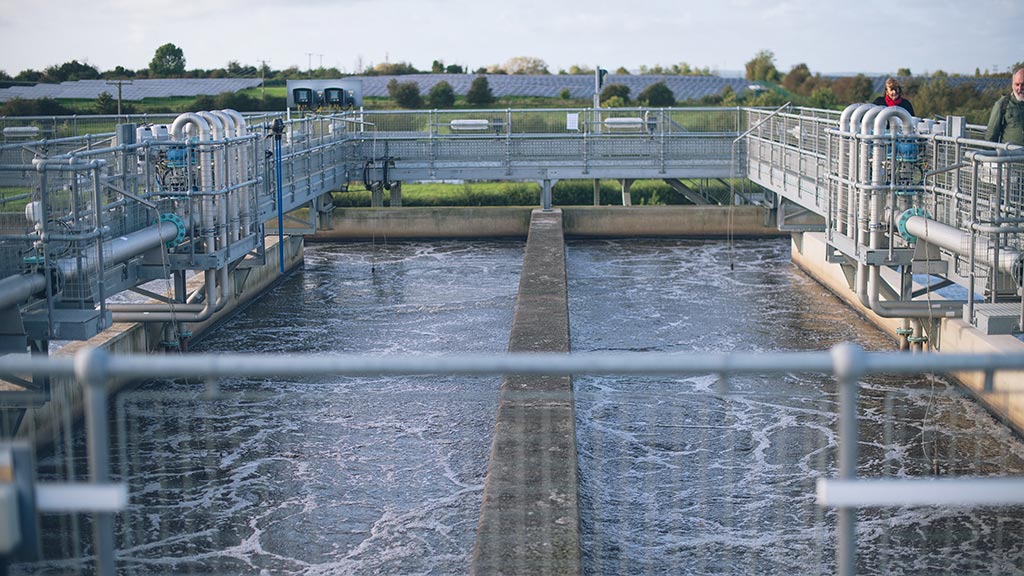- Home
- Our purpose
- Sewerage
- Water recycling
Why do we treat sewage?
We treat sewage to ensure harmful bacteria and contaminants are removed before it is released back into local waterways.
This helps protect public health, the environment and wildlife, while also reducing water pollution and improving water quality.
What is sewage made up of?
While sewage can include runoff from roofs and roads and waste from businesses, the majority comes from customers’ homes.
Sewage doesn’t consist of just poo and pee – it is also made up of toilet paper, shampoo, toothpaste, detergent and much more. This includes items that shouldn’t be put down the drain, such as wet wipes, bits of food, fats and oils.
This ‘sewer soup’ eventually makes its way to a water recycling centre where it goes through a rigorous treatment process.

How we treat sewage
Each water recycling centre treats waste differently depending on what comes in and where the final product ends up.
Watch this video or read the steps below to learn more about how we treat sewage.
- Sewage arrives at the inlet and passes through our screens, where most of the solids are captured and removed. Anything that is screened ends up in a compactor where it is compressed, ready for it to be taken to landfill.
- Next, the wastewater moves into our primary settlement tanks. Here it is slowed right down, and the remaining solids are given time to sink to the bottom of the tanks, leaving fats and oils on the surface.
- A rake arm then makes its way around the tanks to force settled solids out of the bottom. The cleaner wastewater flows out of the tank, leaving the fats and oils behind ready to be skimmed off.
- The water then undergoes biological treatment, where we treat it using nature rather than chemicals. We either use aeration lanes (the activated sludge process) or filter beds, which allow bacteria to feed off the waste, helping to clean it and reduce the nutrient load.
- After biological treatment, the water enters our final settlement tanks. At this stage, any remaining solids settle at the bottom of the tank and are removed.
- We combine these solids with the solids from the primary settlement tanks. This energy-rich sludge is then taken away and can be used for biogas production.
- At most traditional water recycling centres, this is where the treatment process ends. However, at some sites, we have additional processes for further nutrient removal or pass the water through an ultraviolet light filter that kills viruses and bacteria like E. coli and rotavirus.
- Finally, we sample the water and send it to our laboratory where it is analysed to check it is environmentally safe to discharge. The water is then released back into the environment where it can rejoin the water cycle.
